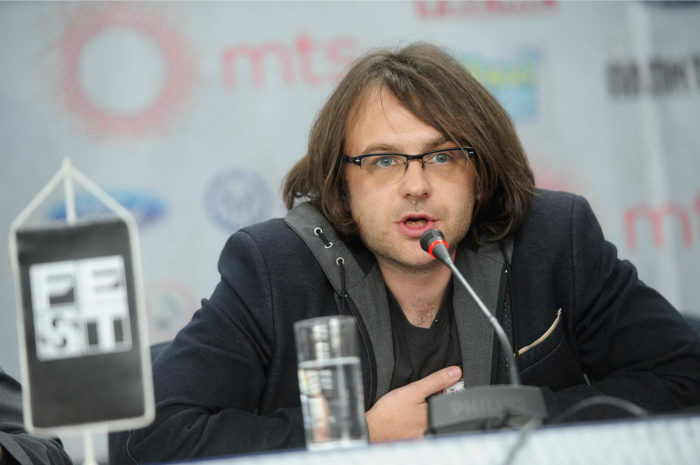1. Films within the programme you select are described as being subversive arthouse films. What elements do you find subversive in the contemporary arthouse film as well as the ones you choose?
Films in the Frontiers Programme are subversive in different ways each year. This programme, in accordance with its name, examines the frontiers. We could say that this year the Frontiers Programme, or at least a part of it, focuses on erasing the frontiers between documentary and feature films. It is no longer unusual that programmes of some of the most prestigious festivals in the world include documentaries and fiction films one alongside the other in competition and that documentaries often win.
This year’s Frontiers Programme includes three excellent documentaries such as: “Safari” by the cult Austrian director Urlich Seidl (in my opinion one of the most important European directors today), who was present here last year with his film “In the Basement”. “Safari” is a provocative portrait of the western society, a film that turns a spotlight on African Safaris, zooming in on white middle-class tourists hunting animals for fun. They experience some kind of an emotional release through killing; at the same time, it should be kept in mind that these are not wealthy tourists, since this type of travel has become affordable for the middle-class as well.
A superb documentary “Liberami” deals with the increasing number of cases of exorcism rituals taking place within the Catholic Church in Italy. There is also the film "Roko", about one of the biggest stars in the porn industry. Roko is very candid in his interviews in front of the camera, sometimes so much so that he brings his myth into question. In this documentary, the audience will be able to learn a lot about his beginnings, relationship with his family as well as the cruel side of show business.
2. FEST has a tradition of having provocative selections, such as the ones made by Dušan Makavejev and Miroljub Vučković. However, without looking back at the history of this big festival: why is it important for FEST today to provoke audiences?
I think that provoking audiences is especially important today, since the conformist and apathetic spirit is stronger than ever. I also believe that this situation does not apply to us alone, but also to Europe and the West in general. Of course, one should distinguish between the provincial, superficial subversion and the thorough one.
3. Do you think that these three selections alone provoke audiences or is that not quite the case? FEST is mostly known for having a quality mainstream programme.
Provocations that you mention exist in the mainstream programme as well. However, those are mostly films that audiences can see in cinemas, immediately or almost immediately after FEST. Programmes we are talking about consist of films that the Serbian audience can rarely see in cinemas and basically only at FEST.Therefore,these are the films for true film aficionados, that is to say those most committed when it comes to the cult.
4. How do you choose films for selections - do you travel to other festivals, or are you examining the unexplored fields of auteur film?
Selecting films means traveling to festivals as well as watching films via links. This is the best way to examine the unexplored fields of auteur film.
5. How important it is to you, what is often crucial for main programmes, that a film has won awards or that its director is famous? Do you consider brave selecting a film that is not relatable to the audience in any way?
Festivals are divided into the key ones, which determine the basic trends in the global arthouse film (there are a maximum of ten), and the supporting festivals, which usually showcase the award-winning and critically acclaimed films from the aforementioned mainstream festivals. There are hundreds of these supporting, satellite festivals, in which the primary focus is not on discovering new titles and authors. I'm trying to include the jewels in the selection as far as possible, and showcase those films that did not previously receive the seal of approval of the greatest festivals, or did not get the recognition they deserve after their premieres.These kind of films are included in the main competition programme as well.
6. The Microwave Selection represents the local low-budget films, aesthetically refreshing work, as you once said. However, what makes it significantly different to the selection Thrills&Kills and Frontiers?
The Microwave Selection is related primarily to the domestic films and is the result of my intent to motivate domestic authors to, if they are forced, make films regardless of the support at competitions. Whether the films are subversive, in what way and to what extent, is not important for this selection. There are certain examples that show that it is possible to create works of art even with the very low budget.This is what happens when the aesthetic conceptions are reconciled in advance with the aforementioned production conditions. This reconciliation requires, in addition to talent, experience and maturity.




